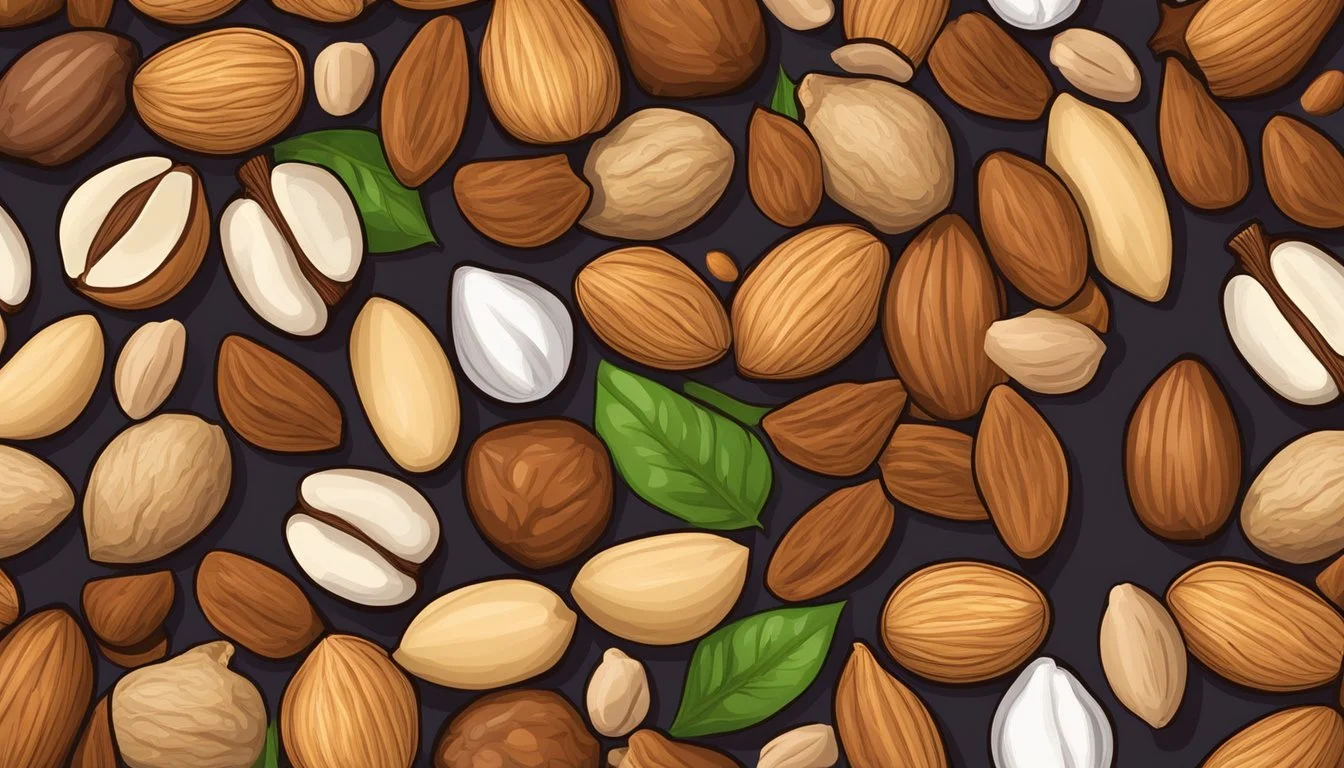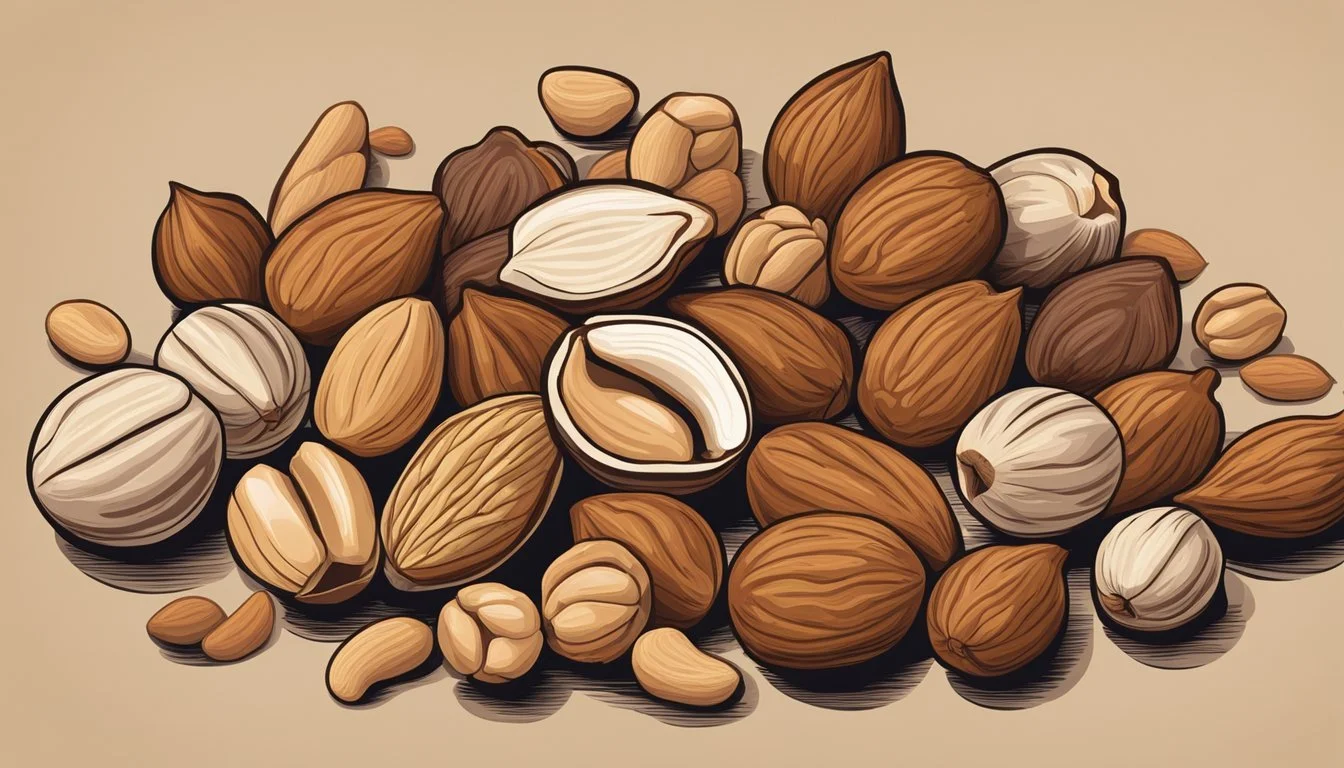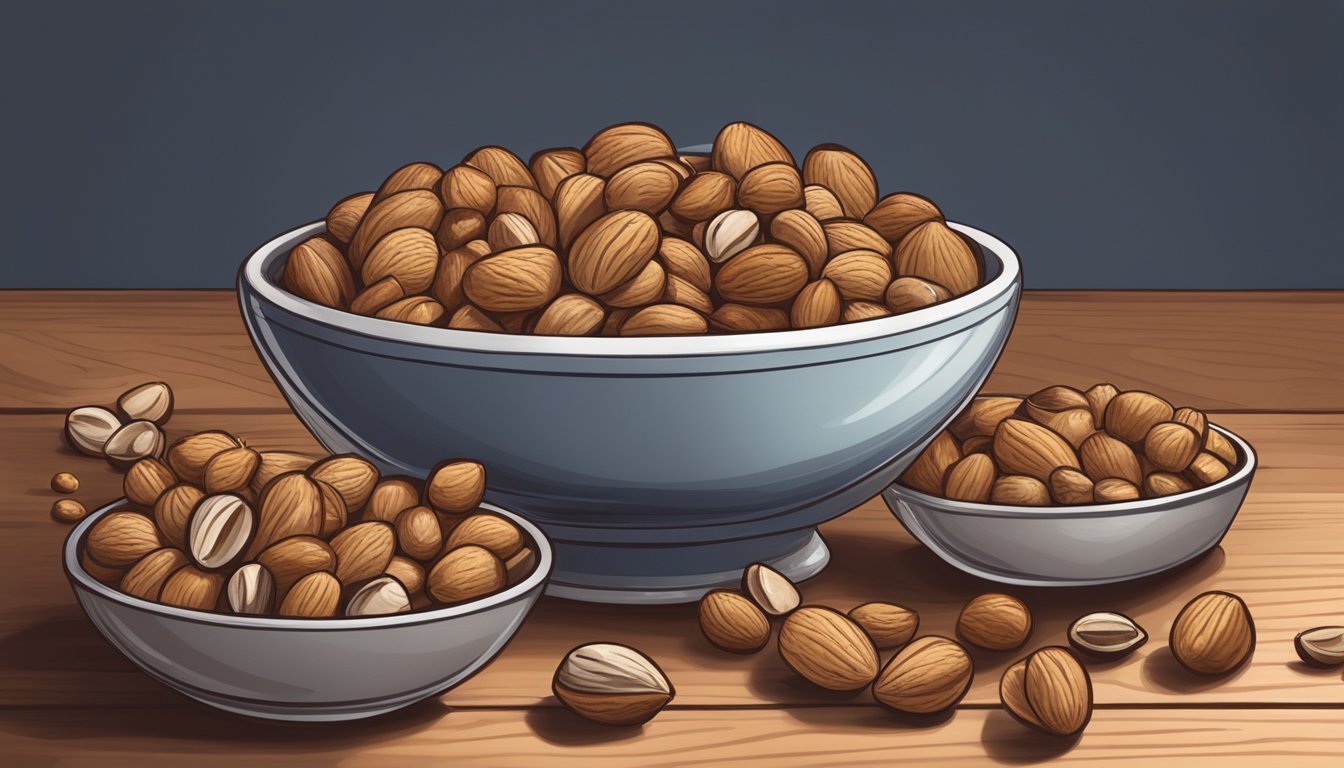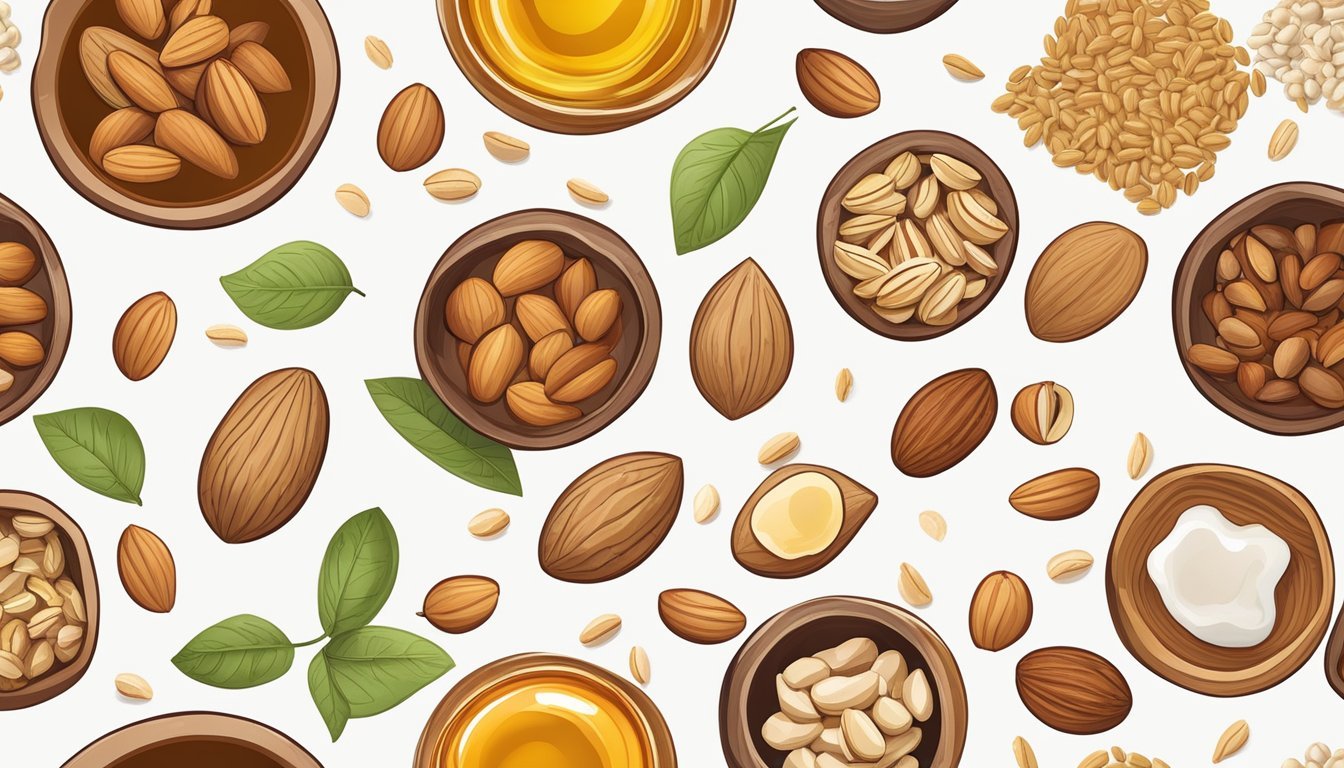How Do You Eat a Nut Mix?
Tips for Healthy Snacking
Eating a nut mix can be a delicious and nutritious way to add a variety of essential nutrients to one's diet. Nuts (What wine goes well with nuts?) are known for their healthy fats, protein, and an assortment of vitamins and minerals that are beneficial for overall health. Integrating nuts into meals and snacks is a straightforward approach, which not only enhances the flavor profile but also boosts nutritional content. To optimize the health benefits, portion control is key, as nuts are energy-dense; even a small handful can add a significant number of calories to the daily intake.
Incorporating nuts into one's diet should be done thoughtfully. Replacing unhealthy snacks with a modest portion of nut mix can help in controlling weight and improving heart health. Studies have indicated that regular consumption of nuts may contribute to better arterial health, reduced inflammation associated with heart disease, and a lower risk of heart attacks and strokes. Thus, choosing nuts over less nutritious options can be a smart move for those looking to enhance their dietary patterns.
Nut mixes can be particularly beneficial when they replace foods high in saturated fats, such as red meats, with their unsaturated fats. Moreover, the variety in a nut mix ensures a range of nutrients, as different nuts contain different combinations of fats, fibers, proteins, vitamins, and minerals. For instance, almonds are rich in vitamin E, whereas walnuts contain high amounts of alpha-linolenic acid, an essential omega-3 fatty acid. Eating a variety of nuts, therefore, can contribute to a more balanced and heart-healthy diet.
Nutritional Profile of Nuts
Nuts are powerhouses of nutrition, densely packed with protein, fiber, and healthy fats. They are also a valuable source of vitamins and minerals, making them a worthwhile addition to any diet.
Identifying Key Nutrients in Nuts
Nuts offer a range of nutrients that are vital for maintaining good health. Each type of nut contains varying amounts of protein, typically about 5 to 9 grams per ounce. They are also high in dietary fiber, which aids in digestion and satiety. When it comes to fats, nuts are rich in unsaturated fatty acids, including both monounsaturated and polyunsaturated fats. These fats are essential for the body and can help improve heart health. Nuts contain considerable amounts of vitamins such as Vitamin B1 (thiamine) and B6, minerals like magnesium and phosphorus, and antioxidants, which are known to reduce inflammation and promote overall health.
Health Benefits of Regular Nut Consumption
Regularly eating nuts as part of a balanced diet is linked to several health benefits. The unsaturated fats in nuts can lead to improvements in heart health and may reduce the risk of heart disease. The antioxidants present in nuts, such as omega-3 fatty acids, contribute to the reduction of inflammation in the body. Additionally, the fiber content in nuts can aid in weight loss and weight management due to its role in promoting a feeling of fullness.
Understanding Calories and Portion Sizes
While nuts are nutritious, they are also high in calories. A small handful of nuts can contain up to 10% of the daily caloric needs for a medium-sized individual. Therefore, portion control is crucial. For example, one serving of protein from nuts could be equal to 24 pistachios or 7 walnut halves. Consuming nuts in moderation and as a replacement for foods high in saturated fat, such as red meat, can help maintain a healthy weight without compromising nutritional intake.
Types of Nuts and Their Characteristics
Nuts come in a wide variety of shapes, sizes, and flavors. They are commonly divided into tree nuts and peanuts, the latter being a legume. Their richness in nutrients makes them a popular choice for a healthy snack.
A Closer Look at Tree Nuts
Almonds are characterized by their crunchy texture and are rich in Vitamin E and magnesium. They can be eaten raw, roasted, or used as a base for almond butter and milk.
Walnuts are known for their wrinkled appearance and brain-like shape, offering a good source of omega-3 fatty acids. They have a slightly bitter and earthy flavor.
Pecans resemble walnuts but have a sweeter taste and a smoother, more buttery texture. They contain monounsaturated fats and are often used in desserts.
Cashews have a unique, curved shape and are softer than many other nuts. They're lower in fat compared to other nuts and have a sweet, buttery taste.
Hazelnuts are small, round nuts with a distinctive flavor often paired with chocolate. They provide a good quantity of manganese and vitamin E.
Macadamia nuts have a creamy texture and a rich, buttery flavor. They're high in monounsaturated fats and are a luxurious addition to baked goods and confectionery.
Pistachios stand out with their green color and come in a shell that often splits naturally. They are a source of protein, fiber, and antioxidants.
Brazil nuts are large and contain selenium, which supports thyroid function. They're best consumed in moderation due to their high selenium content.
Common Properties of Peanuts and Legumes
Peanuts, while often grouped with tree nuts, are actually legumes. They grow underground and are related to beans and lentils. Peanuts are versatile and can be found in various forms, from raw and roasted to peanut butter. They are particularly high in protein and beneficial fats.
Legumes, in general, are an excellent plant-based protein source, and although peanuts are the most well-known nut-like legume with this characteristic, other legumes also offer similar nutritional profiles, including fiber and minerals essential for a balanced diet.
Proper Ways to Consume Nuts
Nuts can be a nutritious addition to a diet when consumed in the right manner. This section offers evidence-based methods for incorporating nuts into meals, optimizing them for snacking, and adding them to breakfast cereals, paying close attention to the aspects of salt and sugar content, health benefits, and natural flavors.
Incorporating Nuts into Meals
A salad can be transformed into a nutrient-packed dish with the addition of unsalted mixed nuts, providing a crunchy texture and healthy fats. For dinner, nuts can enhance dishes such as whole grain sides or quinoa salads. When cooking or baking, natural nut butters can be a wholesome alternative to butter or other fats, contributing to flavor and nutrition.
Smart Snacking with Nuts
Selecting unsalted or lightly salted nuts can support one's health goals by reducing sodium intake. Mixed nuts or trail mix are convenient as a snack food, and when portioned properly, they serve as a healthy snack option. It's wise to avoid versions with added sugar or honey to maintain the natural benefits of the nuts.
Adding Nuts to Breakfast and Cereals
Breakfast can be both healthful and satisfying with the addition of nuts. A spoonful of crunchy nuts or natural nut butter can be added to cereal or yogurt, providing a sweet taste without the need for added sugar. Those looking for a more savory option might select unsalted nuts on their own or stirred into a hot cereal for a nutrient-dense start to the day.
Buying and Storing Nuts
When purchasing nuts and ensuring their freshness, it's essential to select quality nuts and utilize effective storage methods. Proper practices can greatly extend a nut mix's shelf life and maintain its natural flavor.
Selecting Quality Nuts at the Store
Consumers should look for nuts that are sealed in bags as they are less exposed to air, which can accelerate the loss of freshness and lead to rancidity. Nuts in bulk bins, despite their apparent value, are more frequently exposed to oxygen and may not be as fresh.
Tips for Selecting Nuts:
Packaging: Choose vacuum-sealed packages to minimize exposure to oxygen.
Appearance: Opt for nuts that look plump and unblemished, avoiding any that appear shriveled or discolored.
Salt Content: Decide between unsalted and salted based on dietary preferences; unsalted nuts typically offer a pure taste and can be more versatile.
Effective Storage Methods for Freshness
For extended freshness, nuts should be stored in a refrigerator or freezer in air-tight containers. This practice can significantly extend their shelf life and prevent the natural oils from becoming rancid.
Storage Recommendations:
Location Shelled Nuts Unshelled Nuts Pantry Up to 3 months 4-6 months Fridge Up to 6 months Up to 6 months Freezer 1 year or more 1 1/2 years or more
Temperature: Keep the fridge temperature consistent to avoid fluctuations that might affect the nuts' quality.
Containers: Use glass jars with air-tight seals for refrigeration and the original packaging or freezer-safe containers for freezing.
Labeling: Always label your storage containers with the date to track and use the oldest nuts first.
Preparing Nuts for Consumption
Before consuming nuts, consumers must ensure they are processed safely and can explore a variety of recipes for nut mixes that suit their taste preferences, ensuring a balance between savory and sweet flavors.
Safe Methods for Nut Processing
Proper preparation of nuts begins with the shell. For shelled nuts, they should be inspected for any signs of spoilage or contamination before consumption. Nuts can be roasted in an oven to enhance their crunchy texture. Preheat the oven to 350°F (177°C) and spread the nuts in a single layer on a baking sheet lined with parchment paper. Roasting time varies, but generally, nuts should be roasted until they're golden brown and fragrant.
Shelled nuts may require additional steps:
Inspect for signs of shell fragments or debris.
If necessary, crack the shell and remove the nut inside.
When baking nuts, keep a close eye to avoid burning, which can occur quickly due to the high oil content of nuts. Bakers often use nuts as a substitute for less healthy ingredients or as an additive for extra texture and flavor in a recipe.
Creating Nut Mixes and Recipes
Creating a nut mix involves curating a blend of different nuts and flavors. One starts by selecting a variety of nuts, such as almonds, cashews, and walnuts. A simple recipe for a homemade nut mix could involve tossing the nuts with a mixture of spices, like salt, pepper, and perhaps sweet elements such as cinnamon or maple syrup.
Recipe Quick Guide:
Ingredients: A selection of nuts of your choice.
Seasoning: Salt, pepper, and optional spices or sweeteners.
Method: Toss nuts with seasoning, spread on lined baking sheet, roast until golden.
Consumers may also opt for sweet and savory combinations, like adding a touch of honey for sweetness or chili flakes for heat. One should balance their flavors to avoid overwhelming the natural taste of the nuts. This tailored approach allows individuals to create a nut mix that satisfies their personal preference for a crunchy, savory, or sweet snack.
The versatility of nut mixes extends to their use in other recipes as toppings or standalone snacks, making them a flexible and nutritious option in one's diet.
Health Considerations and Allergies
Eating a nut mix can be beneficial or potentially harmful, depending on individual health considerations such as allergies, heart disease, and dietary restrictions. It is critical to understand these health implications to safely incorporate nut mixes into one's diet.
Understanding Allergies and Nut Sensitivities
Allergies to nuts are common and can be severe, with reactions ranging from skin irritation to anaphylaxis. Nut sensitivities and allergies involve the immune system overreacting to proteins found in nuts, causing symptoms such as coughing, stomach pain, sneezing, and itching. Individuals with allergies should scrutinize food labels for mentions of nuts, phrases like "may contain nuts," or "produced on equipment that also processes nuts."
Avoidance: Strictly steer clear of nuts and products with nuts.
Label Reading: Always read ingredients to spot potential nut content.
Emergency Plan: Carry an epinephrine auto-injector if prescribed by a healthcare provider.
Managing Nut Intake for Dietary Restrictions
Nuts contain saturated fats but are also a good source of healthy fats, which can affect cholesterol levels. They can contribute to the management of LDL (low-density lipoprotein) levels, often referred to as 'bad' cholesterol, while providing essential nutrients. However, individuals with heart disease, high blood pressure, or diabetes should manage nut intake to avoid exacerbating these conditions. Regular consumption of nuts, in controlled portions, may support the maintenance of healthy blood pressure and triglyceride levels, reducing inflammation and the risk of heart disease.
Dietary Considerations for Nut Consumption:
Heart Disease: Opt for unsalted nuts to lower sodium intake.
Diabetes: Monitor blood sugar as nuts can affect glucose levels.
Inflammation: Choose nuts like walnuts that are high in omega-3 fatty acids.
The Role of Nuts in Diet and Weight Management
Integrating nuts into a diet can be a strategic approach to weight management due to their rich nutrient profile affecting both metabolism and satiety.
Nuts in Balanced Diets and Weight Loss Plans
Nuts are valued for their role in balanced diets, offering a dense source of protein, healthy fats, and dietary fiber which can contribute to a sense of fullness and prevent overeating. Moderation is key; a small handful, equivalent to roughly a one-ounce serving, is typically recommended. For example, a portion of almonds equates to about 23 kernels. This controlled approach allows individuals to reap the benefits of nuts without consuming excess calories, thus supporting a weight loss plan.
Portion suggestion: 1 ounce (approximately 23 almonds, 14 walnut halves, or 28 peanuts)
In weight management, focusing on the nutritional quality of foods is crucial, and nuts rank highly due to their beneficial compositions. They contain unsaturated fats that are healthier for the heart compared to saturated fats found in many other high-calorie snacks.
Analyzing the Impact of Nuts on Metabolism
Nuts can play a role in enhancing metabolism due to their combination of protein and fiber, both of which require more energy for the body to break down compared to simple carbohydrates and fats. This increased energy expenditure can, in turn, have a modest impact on weight loss by slightly elevating the rate at which calories are burned. However, it is essential to factor in the calorie density of nuts, ensuring they are eaten in moderation as part of a controlled diet to prevent caloric surplus.
Metabolic note: Protein and fiber in nuts increase thermogenesis and satiety, potentially contributing to better weight management.
Nuts also support heart health with their healthy fat profiles and can contribute to gut health due to their fiber content, though these benefits should be considered alongside the primary focus of weight management. Integrating nuts into one's diet effectively requires careful attention to portion sizes and the overall balance of one's diet.
Sourcing Sustainable and Organic Nuts
Consumers increasingly seek out organic nuts as they often come from farming practices that omit pesticide application, striving for more natural ecological balance. Organic certification denotes adherence to specific growing conditions and no use of synthetic fertilizers or pesticides.
When it comes to sustainability, Brazil nuts are championed for their rainforest compatibility, only thriving amidst diverse ecosystems, thus encouraging the preservation of their natural habitat. Sustainable nut sourcing also involves protecting water resources, ensuring equitable labor practices, and minimizing land clearing.
To foster sustainability in the nut industry, entities like the Sustainable Nut Initiative collaborate with international companies towards more responsible farming practices. It is imperative to support companies that prioritize ethical sourcing, coming from farms that manage their environmental impact and uphold social responsibility.
Here is a straightforward way to ensure nut mixes are from sustainable and organic sources:
Check labels for organic certification.
Look for sustainability certifications or policies on the packaging.
Research brands that focus on eco-friendly and fair-trade practices.
Favor local or small-scale producers where feasible, as they often follow more sustainable methods due to their closer connection with the land.
Consumers who prioritize organic and sustainable foods contribute not only to their health but also to a more positive global impact, aligning their experience with environmental and social well-being.








